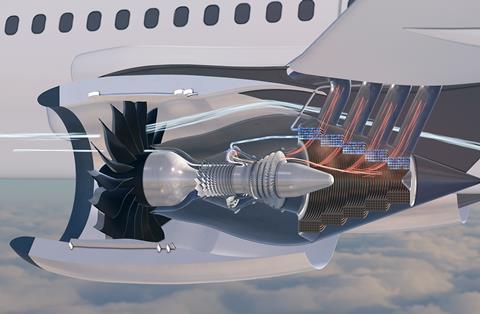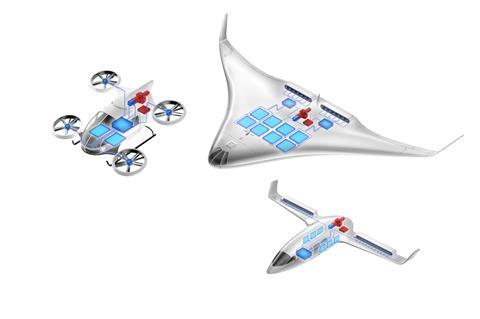New propulsion technologies including hybrid-electric, hydrogen and modified turbofans have a number of challenges to overcome but offer huge opportunities for decarbonising aviation in the future, according to panellists on a FlightGlobal webinar.
The ‘Disruptive Propulsion Technologies’ webinar on 9 March examined the pros and cons of hybrid-electric aircraft, hydrogen combustion and MTU’s water-enhanced turbofan (WET) engine, all of which are aimed at helping the aviation industry meet is goal of achieving net-zero carbon emissions by 2050.

The future of aviation will likely involve a combination of different technologies on the propulsion side, together with much greater use of sustainable aviation fuels (SAF) – both biological and synthetic – to ensure that 20 years from now, society views the industry’s environmental efforts in a positive light, says Frank Haselbach, head of propulsion engineering at Airbus.
Embraer chief technology officer Maurilio Albanese Novaes Junior agrees that there is no “silver bullet” for net-zero aviation, rather a mixture of fully-electric, hybrid-electric, hydrogen fuel cell and hydrogen combustion technologies, alongside SAFs, will be deployed. “Together with challenges we have huge opportunities,” says Albanese Novaes.
Immature battery technology, additional weight and complexity, and infrastructure challenges present potential stumbling blocks before those opportunities can be realised, however. For battery technology to “get to something credible” for meaningful applications in the aerospace sector will require “a journey”, and this is “not something that will happen tomorrow”, cautions Haselbach.
Pratt & Whitney, which sees hybrid-electric technology as a key pathway to reducing aviation’s carbon footprint, “doesn’t make batteries, and we don’t intend to”, says the engine manufacturer’s director of advanced concepts and technologies, Vince Sidwell. However, he believes the industry must “prepare for something disruptive” on the battery front that would make hybrid-electric technology “more pervasive”. He adds that “we can put together a good hybrid-electric system and, as batteries mature, we can integrate that into the systems”.
Pratt & Whitney is developing a new hybrid-electric technology demonstrator programme for future advanced air mobility vehicles, known as STEP-Tech. Sidwell says that lab-scale demonstrations will start running later this year. The manufacturer is also working with Raytheon Technologies and Collins Aerospace on a regional hybrid-electric flight demonstrator that aims to improve fuel efficiency by 30%, which Sidwell says is expected to fly in 2024.

German engine manufacturer MTU, meanwhile, is taking a different approach by developing a water-enhanced turbofan with a targeted launch date of 2035. Using residual heat from exhaust gas, the WET engine uses a steam generator to vaporise water, which is then injected into the combustor. The technology can cut NOx emissions by 80% and reduce the formation of contrails, thereby addressing some of the non-CO2 global warming effects of aviation, says Martin Stadlbauer, director of engineering advanced programmes at MTU.
However, the WET engine comes with a 40% weight penalty and requires a longer nacelle that will increase drag. Despite this, Stadlbauer believes the increased weight and drag is balanced out by the positive impact on NOx and other non-CO2 effects.
“Of course we’re adding complexity and we see lots of challenges in maturation,” he says, adding that “we need revolutionary technology together with SAF to honestly say we’re reaching something like carbon-neutral flying”.
Pratt & Whitney’s Sidwell notes that “we have to talk about contrails”, adding that while the science on their impact is “not as mature” as it is on CO2, non-CO2 “will be a bigger point of what we do” in the future.
On hydrogen, Sidwell says he sees “huge opportunities” and “huge thermodynamic advantages”, although Embraer’s Albanese Novaes points to “a lot of challenges”, including production, storage and infrastructure at airports.


























